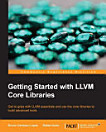Professional Embedded ARM Development
এই ইবুকখনৰ বিষয়ে
With more than 90 percent of mobile phones sold in recent years using ARM-based processors, developers are eager to master this embedded technology. If you know the basics of C programming, this guide will ease you into the world of embedded ARM technology. With clear explanations of the systems common to all ARM processors and step-by-step instructions for creating an embedded application, it prepares you for this popular specialty.
While ARM technology is not new, existing books on the topic predate the current explosive growth of mobile devices using ARM and don't cover these all-important aspects. Newcomers to embedded technology will find this guide approachable and easy to understand.
- Covers the tools required, assembly and debugging techniques, C optimizations, and more
- Lists the tools needed for various types of projects and explores the details of the assembly language
- Examines the optimizations that can be made to ensure fast code
- Provides step-by-step instructions for a basic application and shows how to build upon it
Professional Embedded ARM Development prepares you to enter this exciting and in-demand programming field.
মূল্যাংকন আৰু পৰ্যালোচনাসমূহ
লিখকৰ বিষয়ে
James A. Langbridge is an R&D Engineering consultant. In his role as an embedded systems consultant, he helps people and companies develop ARM-based systems and optimize code. He has been working in embedded systems for over 10 years in the aviation, defense, industry, and telecom sectors. His expertise includes bootloader coding, system initialization, and code optimization.






